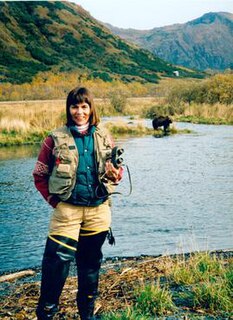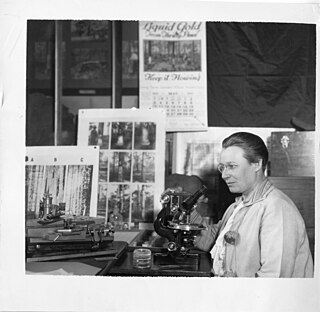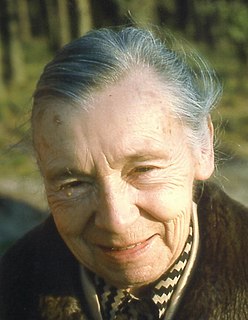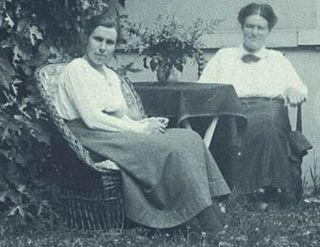 W
WMollie H. Beattie was an American conservationist, and director of the United States Fish and Wildlife Service. In 2009, she was designated a Women's History Month Honoree by the National Women's History Project.
 W
WChristine Johanna Buisman was a Dutch phytopathologist who dedicated her short career to the research of Dutch elm disease and the selection of resistant elm seedlings. In 1927, Buisman provided the final proof that Graphium ulmi was the causal agent of the disease, concluding the controversy which had raged among Dutch and German scientists since 1922.
 W
WThe Chipko movement or chipko andolan, was a forest conservation movement in India.
 W
WEloise Gerry was an influential research scientist whose early 20th century work contributed greatly to the study of southern pine trees and turpentine production. Gerry was the first woman appointed to the professional staff of the U.S. Forest Service at the Forest Products Laboratory, and one of the first women in the United States to specialize in forest products research.
 W
WMargaret D. Lowman, Ph.D. a.k.a. Canopy Meg is an American biologist, educator, ecologist, writer, explorer, and public speaker. Her expertise involves canopy ecology, canopy plant-insect relationships, and constructing canopy walkways.
 W
WWangarĩ Muta Maathai was a Kenyan social, environmental, and political activist and the first African woman to win the Nobel Peace Prize. As a beneficiary of the Kennedy Airlift she studied in the United States, earning a Bachelor's Degree from Mount St. Scholastica and a Master's Degree from the University of Pittsburgh. She went on to become the first woman in East and Central Africa to become a Doctor of Philosophy, receiving her Ph.D. from the University of Nairobi in Kenya.
 W
WIlla Martin was a German dendrologist, botanist, conservationist and dentist.
 W
WNalini Nadkarni is an American ecologist who pioneered the study of Costa Rican rain forest canopies. Using mountain climbing equipment to make her ascent, Nadkarni first took an inventory of the canopy in 1981, followed by two more inventories in 1984.
 W
WMarie Beatrice "Bea" Schol-Schwarz was the Dutch phytopathologist who discovered the causal fungus of Dutch elm disease. She first studied pathogens afflicting peanuts and later the fungus Phialophora.
 W
WVitellaria paradoxa is extremely important in Burkina Faso. Termed "women's gold" by Burkinabé villagers, the nuts of shea tree can be collected and processed by crushing and grinding to yield shea butter, which is widely used in soap and in cosmetics as a moisturizer, salve, or lotion. Shea butter is also edible and may be used in food preparation; it is sometimes used in the manufacture of chocolate. The bark of the tree is also used as an ingredient in traditional medicines and the shell of nut is said to be able to repel mosquitoes and is also said to protect existing trees.
 W
WThyra, Princess Heinrich of Hanover is a German forester. As the wife of Prince Heinrich of Hanover, she is a princess of the House of Hanover.
 W
WDr. Elizabeth Anita Widjaja is a Senior Principal Researcher of bamboo taxonomy at the Herbarium Bogoriense, Botany Division, Biological Research Centre at the Indonesian Institute of Sciences in Bogor, Indonesia. She is especially interested in Indonesian bamboo and Malesian bamboo generally, and promotes the cultivation of bamboo for the prevention of erosion.
 W
WThe Women's Timber Corps (WTC) was a British civilian organisation created during the Second World War to work in forestry replacing men who had left to join the armed forces. Women who joined the WTC were commonly known as Lumber Jills.